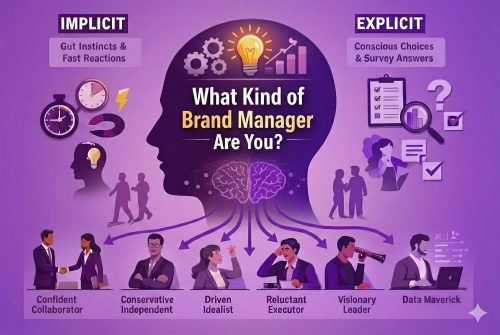
Inside the Mind of a Brand Manager: Find out how your instincts shape the way you work
If you’re a brand manager, you may plan carefully, but a lot of how you work day to day probably comes down to habit and
Create effective
Testing the emotional associations with claims and taglines, and their believability.

When we test claims and taglines what are we testing?
A claim or tagline is a powerful tool that can make or break a brand’s success in the marketplace. We present them textually or within the context of a visual, such as a logo or campaign theme.
They serve as a concise and memorable way for a brand to communicate its value proposition to potential customers.
We can test a set of claims or taglines shown in isolation. We reveal which one delivers the desired effect better and why. We can also compare them with those from previous campaigns or those of competitors.
Claims and taglines can create a strong emotional connection with consumers and help to build a loyal customer base. This is why we use implicit techniques to understand the emotional and functional impact of the claim or tagline. This impact should affect the brand and its purchase intent.
They can also communicate the brand’s essence, values, and unique selling proposition, and highlight its unique benefits, positioning, or personality. This is why we also measure the believability of claims and taglines. We wish to know if the target audience feel it is a believable or plausible statement about the brand.
Why is an implicit response great for claims and tagline testing?
The claims a brand makes can either be the truth, half-truth (and hence half-lie) or lies. Some solid research now shows that only truthful claims, claims that are perceived to be plausible and believable, can have a positive impact on the brand (de Jong1 , Huluba1 & Beldad, 2020). Hence, believability of claims needs to be assessed before being used. It is also the case that the emotional and functional associations people have with a claim should be measured as its intended effects on the brand could be way off.
Being unique and differentiated is a critical factor when creating effective claims and taglines for advertising campaigns. It’s not enough to simply offer a quality product or service. Brands must also be able to stand out from their competitors too.
A unique and differentiated claim or tagline should also be memorable to consumers. By using catchy phrases, creative imagery, and unique messaging, brands can create a lasting impression in the minds of consumers. For example, M&M’s “Melts in Your Mouth, Not in Your Hands” tagline has been used for decades and has become a staple of the brand’s marketing efforts. The tagline is memorable, catchy, and effectively communicates the product’s value proposition to consumers.
Back Up Claims and Taglines with Evidence to be ‘Believable’
Consumers are becoming ever more discerning and savvy, and they can easily see through any claim that lacks evidence or factual support.
Therefore, it’s essential for brands to ensure that their claims and taglines are not only unique and engaging but also believable.
Measure the Emotional Response to Your Product Claims
Claims and taglines featured on marketing materials and packaging say much about a brand. They can effectively communicate the brand’s essence, values, and unique selling proposition. This in turn builds brand awareness among potential customers, and differentiates the brand from competitors.
Split Second Research can test new and existing claims, as well as those of competitors, to determine their effects on consumer perception and intent to purchase. These tests can reveal the emotions that consumers associate with a claim. They also reveal something about the ownership of a claim. This means whether the brand owns the claim or if it is misattributed to a competitor.
References
de Jong, M. D., Huluba, G., & Beldad, A. D. (2020). Different shades of greenwashing: Consumers’ reactions to environmental lies, half-lies, and organizations taking credit for following legal obligations. Journal of Business and Technical Communication, 34(1), 38-76.
Updated July 2024 by Dr Eamon Fulcher PhD

Use our technology, founded in consumer neuroscience, to understand the effectiveness of your product claims
Complete an enquiry form to arrange a meeting with us:

If you’re a brand manager, you may plan carefully, but a lot of how you work day to day probably comes down to habit and

Well yes, as a matter of fact, everyone is There’s no shame in it. We’re all biased in some way or another, although understandably we’d

The idea of synthetic respondents in market research arises from a desire to simulate human responses using artificial intelligence. Instead of collecting data from real